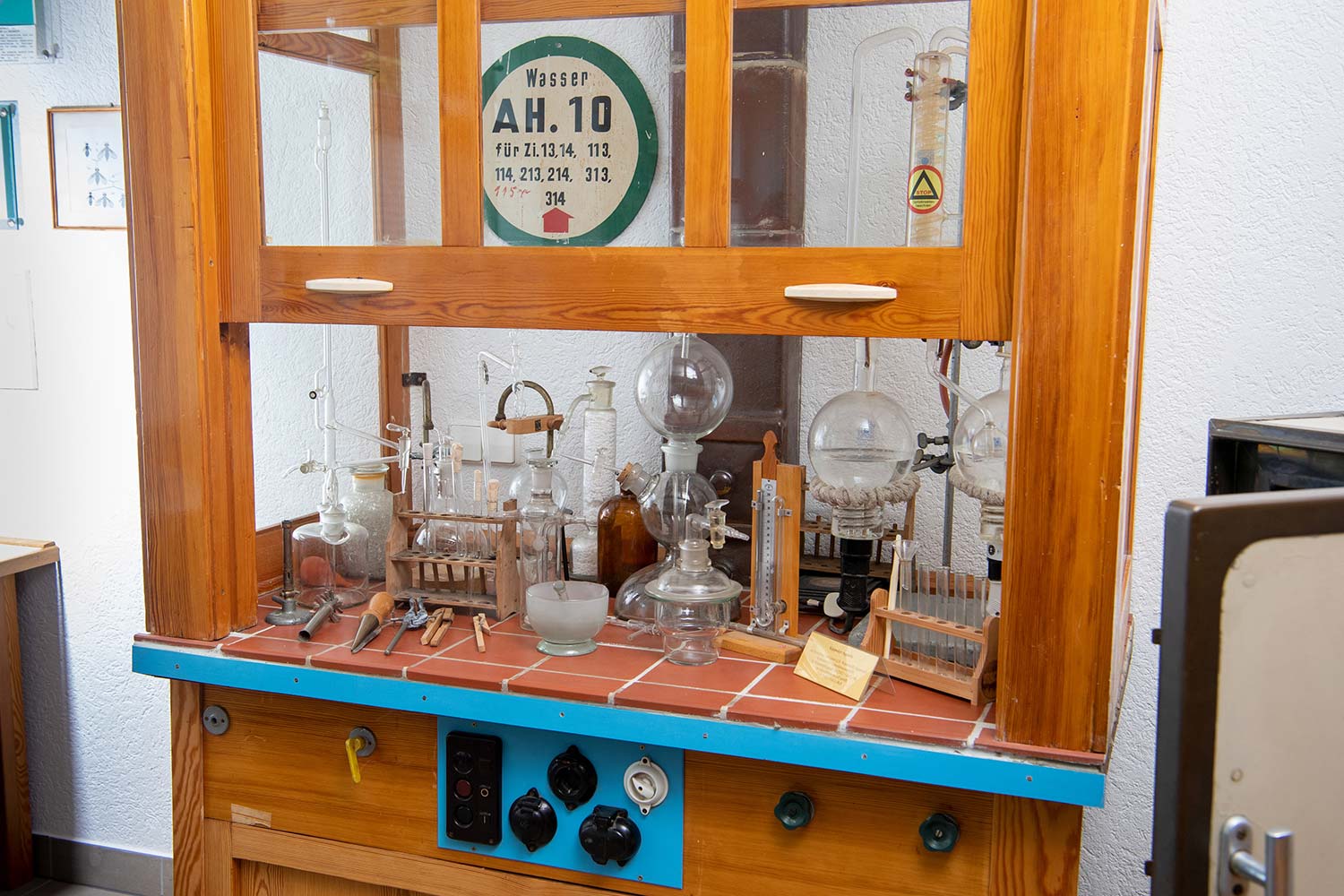8Chemical workplace under a fume hood
around 1950

Many chemical reactions produce gases. Chemical workplaces are therefore often located under fume hoods like this one, which dates to around 1950. The hood quickly extracts gases, dust and aerosols and protects the experimenter from inhaling toxic substances.
The workplace has connections for water, electricity (rear left) and natural gas (rear right), which simplifies the work. The side walls of the fume hood are firmly built and offer protection from uncontrolled reactions or fire. The panes are made of safety glass and can be moved in the front so that a scientist can stretch their hands underneath and work.
One piece of equipment particularly stands out in this workplace. It consists of glass balloons attached one above the other. This device is called Kipp‘s apparatus after its inventor, the Delft pharmacist Petrus Jacobus Kipp (1808-1864). It can be used to produce gases that are used in the laboratory. Substances that react with each other are brought together in the flask. An example is the reaction of zinc with hydrochloric acid, in which zinc chloride and hydrogen are formed in the reaction Zn+2HCl=ZnCl2+H2. Hydrogen gas is trapped at the top and can then be used.
Kipp‘s apparatuses were regularly used in laboratories to produce gases until the late 20th century. Accordingly, chemical workstations under fume hoods were standard equipment in biomedical research facilities well into the late 20th century. Today, gases are industrially manufactured and sold in gas cylinders. They are purer and drier than gases produced by Kipp‘s apparatus.